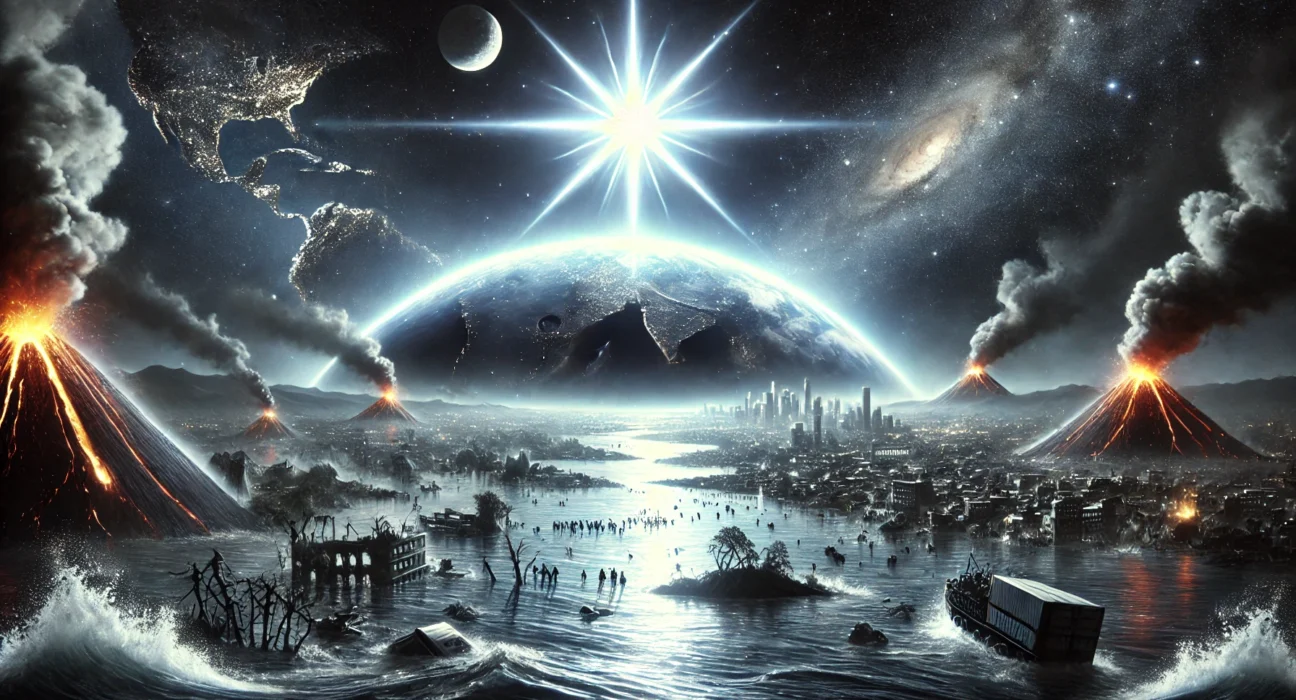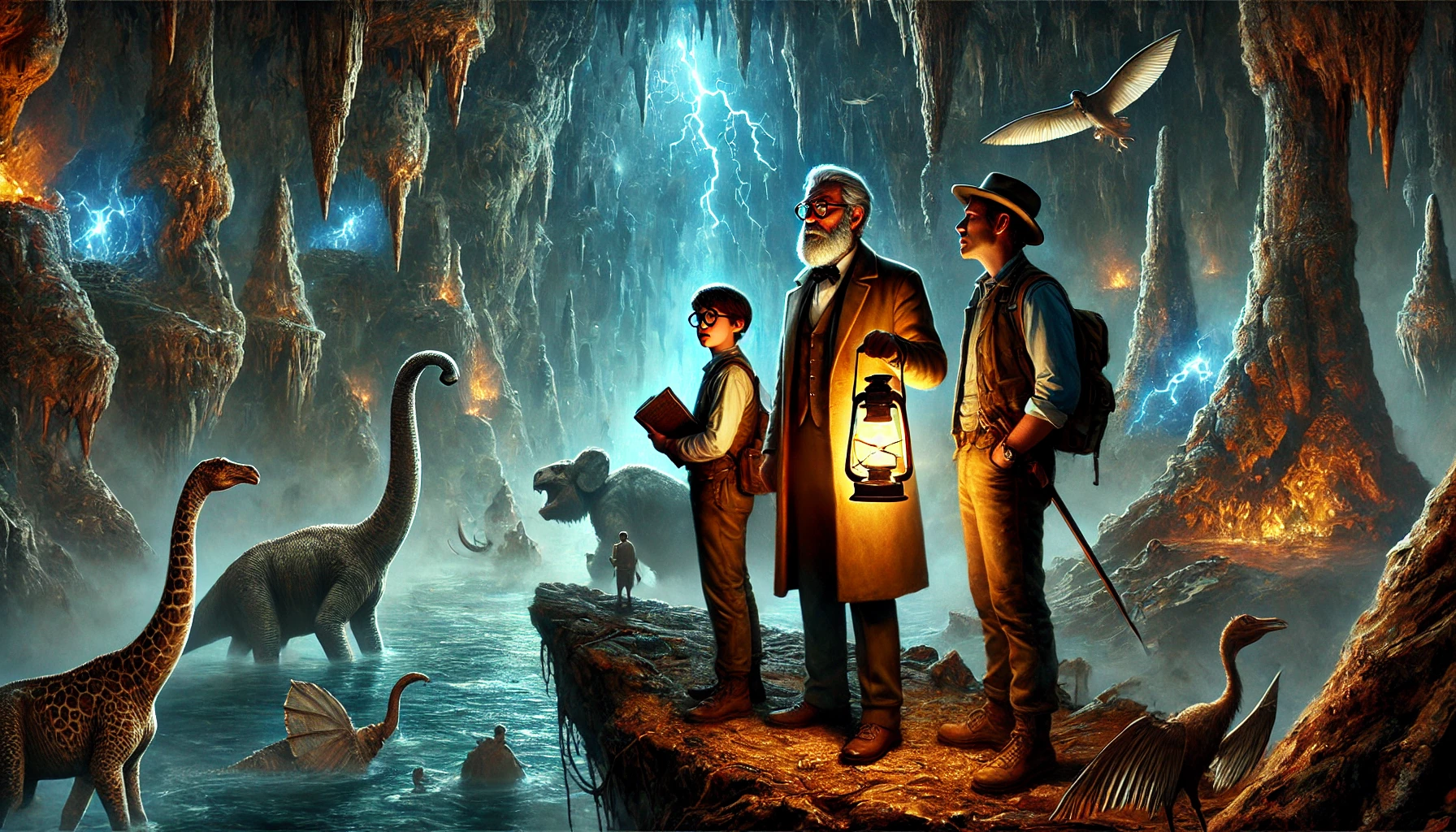The Star is a science fiction short story written by H.G. Wells, first published in 1897. Wells, known for his pioneering work in science fiction, presents a tale of cosmic catastrophe that reflects both human and cosmic insignificance. The story revolves around the sudden appearance of a new celestial body—referred to as “The Star”—which approaches Earth, wreaking havoc and causing widespread destruction. Wells blends scientific understanding with imaginative elements, portraying the vastness of space and the fragility of human civilization.
Comprehensive Plot Summary
On the first day of the new year, astronomers in observatories across the world made a startling discovery. The planet Neptune, distant and largely unknown to the common people, had begun to move erratically. Its velocity slowed, its path altered. Those trained in the ways of the stars noticed the change and began to speculate. Theories swirled, and soon the news emerged: an unknown celestial body, a faint speck of light, had appeared in the region of Neptune. This speck grew larger and brighter by the day, an object from the void beyond the known reaches of space, hurtling toward the solar system.
The people of the Earth, most of whom had never heard of Neptune, paid little attention. Life continued, unbothered by the cosmic events unfolding in the heavens. But in the scientific community, excitement grew, for the behavior of this new object was unlike anything seen before. It did not move like a planet; it was wild, unpredictable. As the days passed, the news spread: the strange celestial body was drawing closer to Neptune, its brightness growing steadily, visible even to amateur stargazers.
On the third day of the new year, a headline in a London paper caught the attention of the masses: “A Planetary Collision.” Astronomer Duchaine declared that the new object, now clearly visible in the constellation Leo, was on a collision course with Neptune. The world, in its ignorance, began to stir. The idea of planets colliding, of the heavens themselves in turmoil, caught the imagination. That night, people in every part of the globe turned their eyes to the sky, but all they saw were the familiar stars. Only those in the scientific world watched in awe as the celestial bodies hurtled toward each other in a collision that would change everything.
As dawn broke in London, the skies revealed something extraordinary: a great white star appeared in the west. It was brighter than any star known to mankind, visible even after the sun had risen. In the streets and in the countryside, people paused to gaze at this new celestial wonder. Seamen far out at sea, waking to their dawn watch, saw it rise like a new moon and were filled with awe.
By midday, the astronomers had their answer: Neptune had been struck by the strange new body. The two massive celestial objects, now fused into one, blazed together in the sky as a new star. The heat of the collision had incinerated both planets, and the resulting conflagration was visible across the world. The Earth, though spared the immediate impact, now faced an uncertain future. The star, now a radiant ball of fire, continued to grow brighter and larger, day by day.
As the days passed, the star loomed ever closer. What had been a bright speck became a blazing disc in the sky. It dominated the night, outshining the moon and turning night into day with its harsh, white light. In towns and cities across the globe, people gathered on rooftops and hillsides to witness the rising of this great celestial fire. With every passing hour, the star grew larger and nearer, its light more blinding.
In every observatory, scientists huddled together in grave silence, for they had realized something the common folk did not yet know: the star was not simply passing by. It was on a trajectory that would bring it perilously close to Earth, if not collide with it entirely. The master mathematician, secluded in his study, worked feverishly through the night. His calculations were grim. He did not need sleep anymore; there was no need for it. The end was approaching.
For most of the world, life continued as normal. Shops opened, factories ran, and politics carried on as usual, but the ever-growing star in the sky could not be ignored. Rumors of its approach spread across towns and cities, and the warnings of scientists—earthquakes, floods, volcanic eruptions, and a steady rise in temperature—began to stir fear. Some fled to the mountains, others boarded ships, desperate to escape what they could not fully understand.
Then, the star came closer. The heat it radiated became unbearable. In the countryside, snow and ice melted, rivers overflowed their banks, and in many parts of the world, devastating floods drowned cities and farmland. The Earth quaked, and volcanoes erupted, sending lava coursing down mountainsides and ash into the air. Great walls of water rose along coastlines, sweeping inland, destroying everything in their path. The very fabric of the Earth seemed to be coming apart under the star’s burning gaze.
Across the globe, the devastation was swift and merciless. In Asia, vast tidal waves swept over entire nations. In South America, earthquakes split the ground open, swallowing buildings and forests whole. Volcanoes, dormant for centuries, erupted in fiery explosions. Humanity, in its helplessness, could only flee or perish. Beneath the unrelenting brightness of the star, death seemed inevitable.
But then, as quickly as it had come, the star began to recede. It passed by the Earth, narrowly missing a direct collision, drawn instead toward the massive planet Jupiter. As the gravitational pull of Jupiter deflected the star’s course, the fiery body veered off into space, continuing its journey toward the sun.
In the moments following the star’s passing, the world was left in a state of ruin. The Earth, battered by earthquakes, floods, and volcanic eruptions, struggled to recover. But the worst had passed. Slowly, the waters began to recede, leaving behind mud-covered ruins and scattered debris. The Earth had survived, though forever changed.
Far away, on the planet Mars, astronomers looked on. They marveled at the events they had witnessed from their distant perch, noting the curious fact that despite the near collision, the Earth remained largely intact. To them, the cataclysm that had shaken the planet to its core was a small matter, one of many such events that the universe routinely produced. From their distant perspective, the tragedy of humanity seemed insignificant, a mere speck in the vast, cold expanse of space.
Main Characters
The Master Mathematician: A central figure in the story, the master mathematician is the first to calculate the potential consequences of The Star’s trajectory. He is portrayed as calm and methodical, facing the impending catastrophe with both scientific curiosity and fatalistic acceptance. His calculations lead him to the grim conclusion that humanity may have lived in vain.
Various Observers: Scattered across the world, characters from different walks of life—policemen, workmen, lovers, and scholars—witness the appearance of The Star. These observers represent a cross-section of humanity and their reactions to the cosmic event, ranging from awe to fear, as the catastrophic events unfold.
The Martian Astronomers: In a brief, detached epilogue, Wells introduces Martian astronomers observing the events from afar. They serve as a reminder of the story’s theme of cosmic indifference, as the catastrophe that devastates Earth is seen as a minor occurrence from their distant perspective.
Themes and Motifs
Cosmic Indifference: One of the primary themes of The Star is the vast, uncaring nature of the universe. As The Star hurtles toward Earth, the insignificance of human concerns in the grander scheme of things becomes evident. The Martian astronomers’ detached observation of Earth’s near destruction reinforces this idea of cosmic detachment.
The Fragility of Civilization: The story highlights how human civilization, with all its advancements and achievements, can be easily disrupted or destroyed by forces beyond human control. The natural disasters that accompany The Star’s approach—earthquakes, floods, and volcanic eruptions—serve as metaphors for the tenuousness of human existence.
Scientific Curiosity vs. Human Fear: The master mathematician embodies the theme of intellectual pursuit in the face of catastrophe. While many characters react with fear or indifference, the mathematician faces the approaching disaster with scientific curiosity and resignation, suggesting a philosophical acceptance of humanity’s place in the universe.
Writing Style and Tone
H.G. Wells employs a narrative style that combines scientific accuracy with vivid, apocalyptic imagery. His descriptions of space, the movements of celestial bodies, and the global disasters caused by The Star are detailed and grounded in scientific understanding of the time. Yet, his portrayal of human reactions to these cosmic events introduces an emotional depth, emphasizing the awe and terror that accompany such incomprehensible phenomena.
The tone of The Star is somber and reflective, underlining the insignificance of human life in the face of the universe’s vastness. Wells’s language is precise, and the story unfolds with a sense of inevitability, as though the catastrophe is a natural consequence of the universe’s indifference. The detached, almost clinical tone is punctuated by moments of human vulnerability, providing a contrast between the coldness of the cosmos and the warmth of human experience.
We hope that this summary has sparked your interest and would appreciate you subscribing to our newsletter.
There’s a treasure trove of other fascinating book summaries waiting for you. Check out our collection of stories that inspire, thrill, and provoke thought, just like this one by clicking here.
Remember, while our summaries capture the essence, they can never replace the full experience of reading the book. If this summary intrigued you, consider diving into the complete story – buy the book and immerse yourself in the author’s original work.
If you want to request a book summary, click here.
When Saurabh is not working/watching movies/reading books/traveling, you can reach him via Twitter/X, or LinkedIn.
Restart reading!






